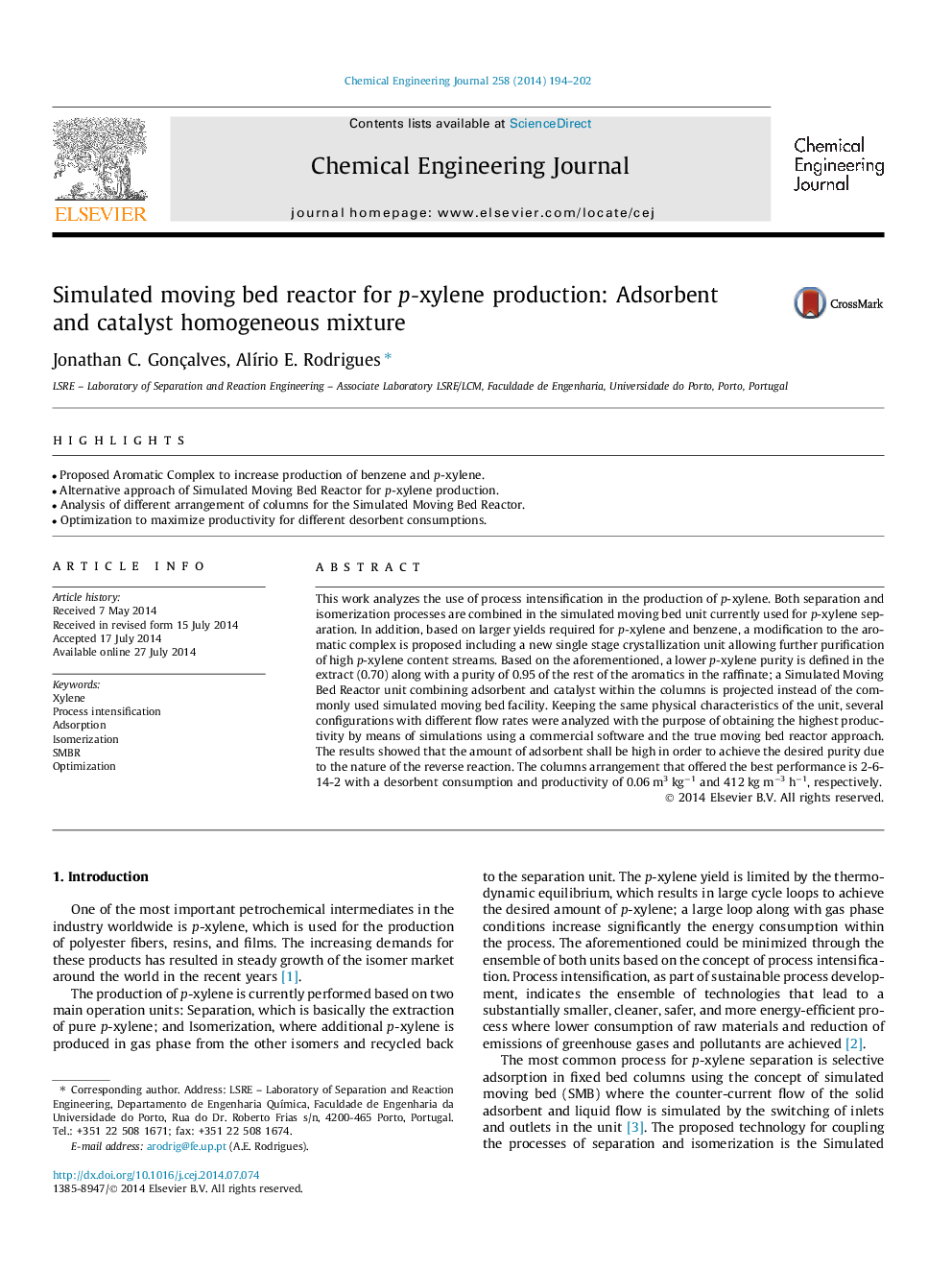| Article ID | Journal | Published Year | Pages | File Type |
|---|---|---|---|---|
| 146968 | Chemical Engineering Journal | 2014 | 9 Pages |
•Proposed Aromatic Complex to increase production of benzene and p-xylene.•Alternative approach of Simulated Moving Bed Reactor for p-xylene production.•Analysis of different arrangement of columns for the Simulated Moving Bed Reactor.•Optimization to maximize productivity for different desorbent consumptions.
This work analyzes the use of process intensification in the production of p-xylene. Both separation and isomerization processes are combined in the simulated moving bed unit currently used for p-xylene separation. In addition, based on larger yields required for p-xylene and benzene, a modification to the aromatic complex is proposed including a new single stage crystallization unit allowing further purification of high p-xylene content streams. Based on the aforementioned, a lower p-xylene purity is defined in the extract (0.70) along with a purity of 0.95 of the rest of the aromatics in the raffinate; a Simulated Moving Bed Reactor unit combining adsorbent and catalyst within the columns is projected instead of the commonly used simulated moving bed facility. Keeping the same physical characteristics of the unit, several configurations with different flow rates were analyzed with the purpose of obtaining the highest productivity by means of simulations using a commercial software and the true moving bed reactor approach. The results showed that the amount of adsorbent shall be high in order to achieve the desired purity due to the nature of the reverse reaction. The columns arrangement that offered the best performance is 2-6-14-2 with a desorbent consumption and productivity of 0.06 m3 kg−1 and 412 kg m−3 h−1, respectively.
